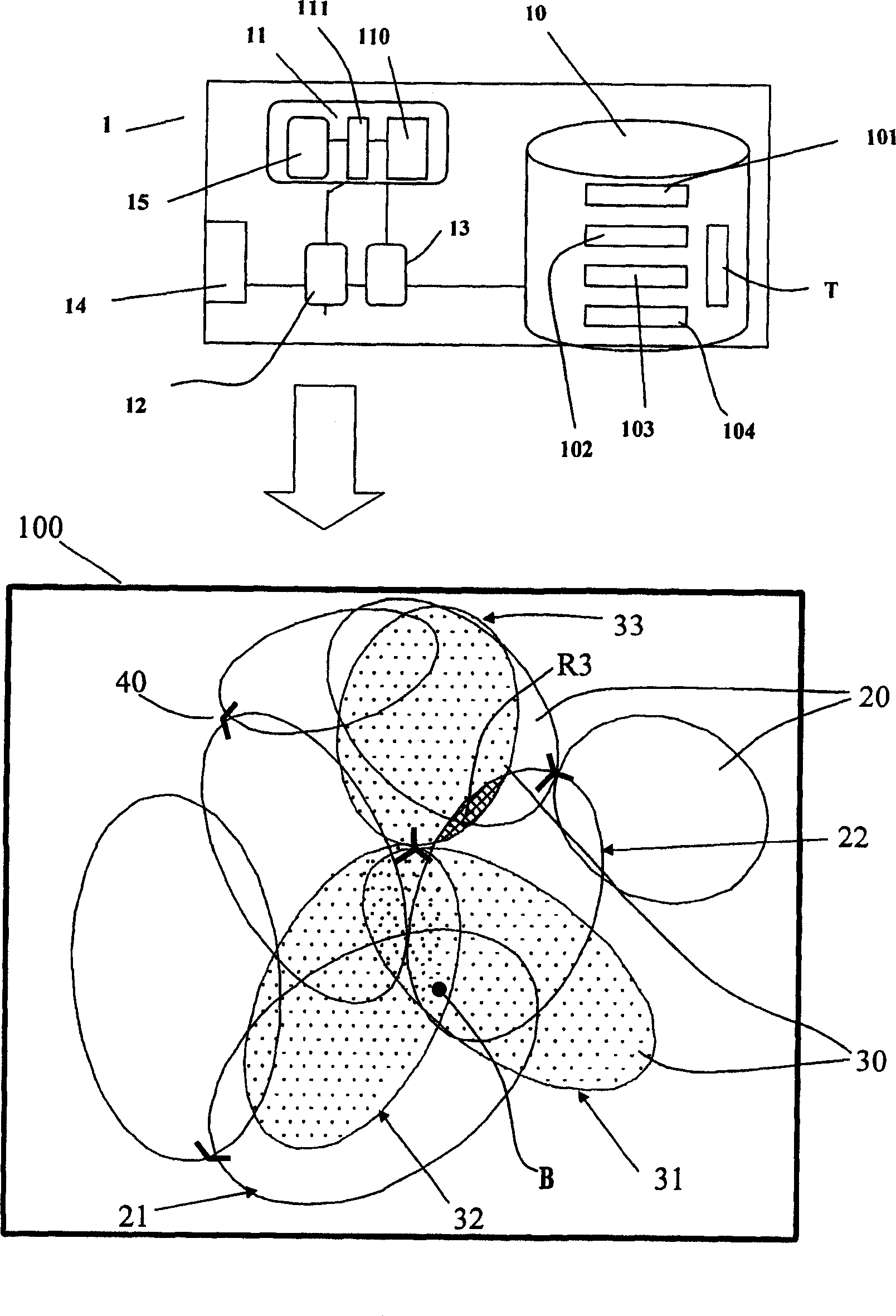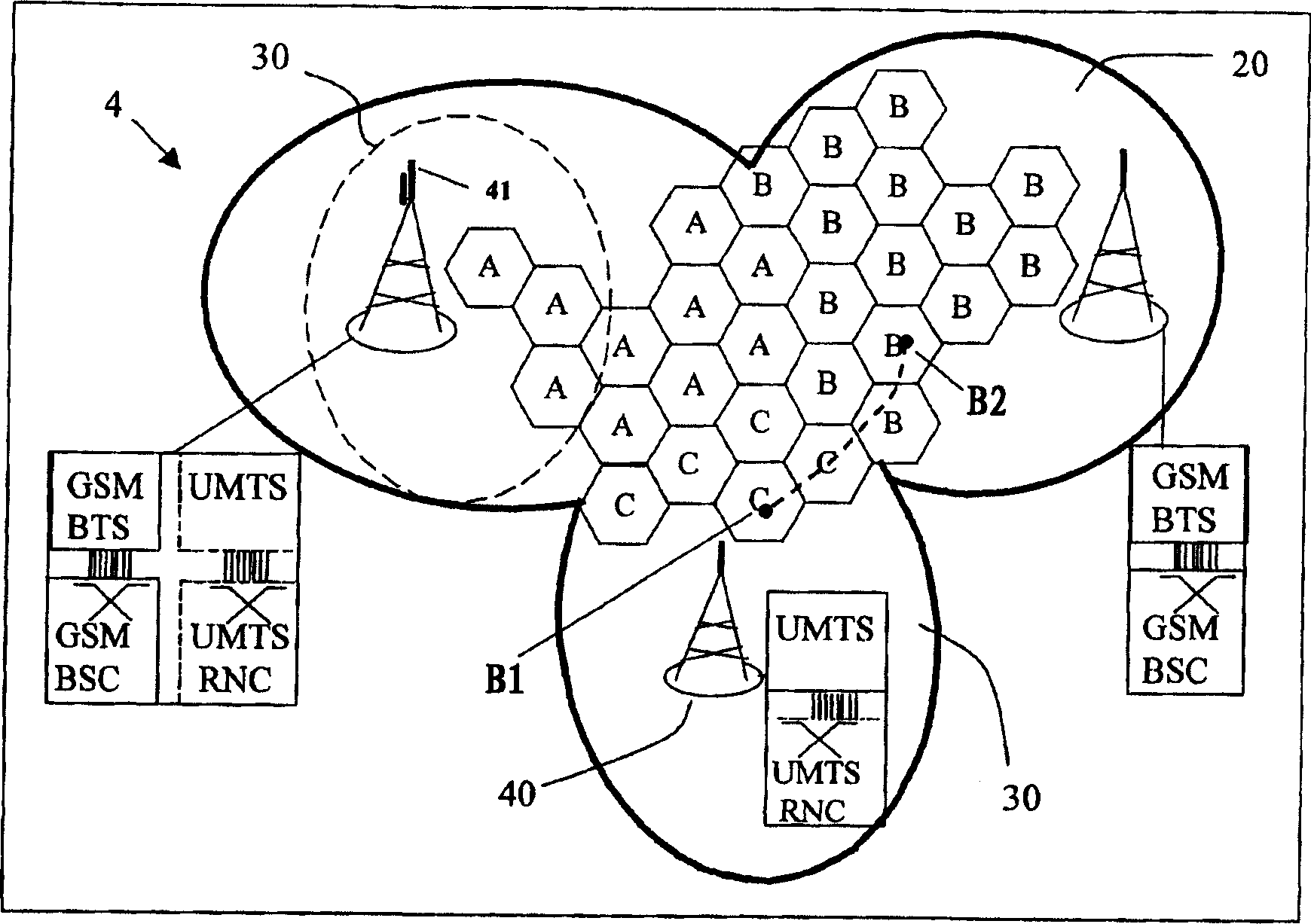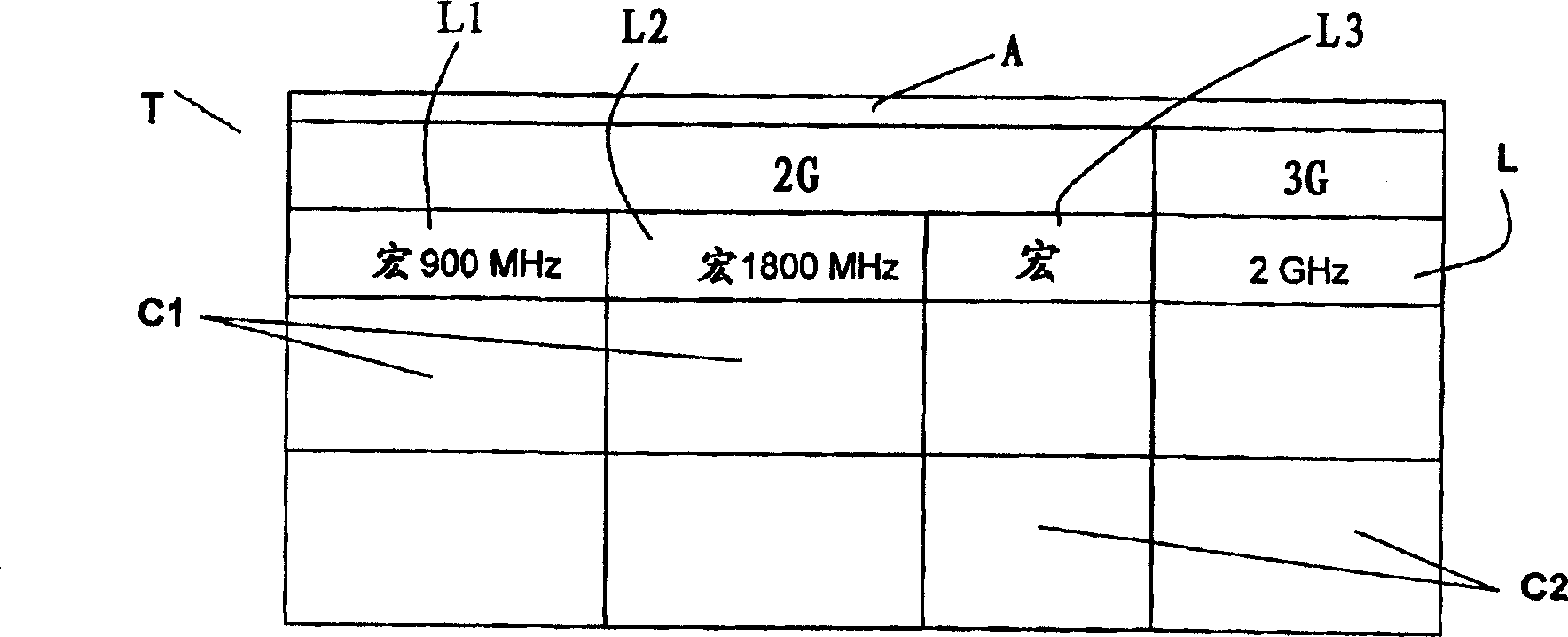Method and system for calculating the 2G-3G neighborhood
A 2G-3G, adjacent cell technology, applied in the direction of network planning, electrical components, radio/induction link selection arrangement, etc., can solve the problem of impossible to optimize network usage, regardless of other characteristics of field level, etc.
- Summary
- Abstract
- Description
- Claims
- Application Information
AI Technical Summary
Problems solved by technology
Method used
Image
Examples
Embodiment Construction
[0056] will now refer to figure 1 , figure 2 and image 3 The invention is described.
[0057] The computer equipment (1) according to the invention is used to calculate the 2G-3G adjacency, thereby allowing the difference between systems of different generations when a dual mode radio terminal moves between these systems within the cellular radiotelephone network (4). Parameterization of automatic transfer of connections. figure 1 The shown device (1) comprises storage means (10), computing means (11) and first selection means (12). The storage means (10) may comprise: a first memory (101) for storing data representing a geographical area covered and divided into a plurality of points or pixels by the cellular radiotelephone network (4); and a second memory (102), for storing data representing the division of the network into a plurality of radio cells (20, 30); and a third memory (103) for storing coverage data at any point in the network (4).
[0058] The split achiev...
PUM
 Login to View More
Login to View More Abstract
Description
Claims
Application Information
 Login to View More
Login to View More - R&D
- Intellectual Property
- Life Sciences
- Materials
- Tech Scout
- Unparalleled Data Quality
- Higher Quality Content
- 60% Fewer Hallucinations
Browse by: Latest US Patents, China's latest patents, Technical Efficacy Thesaurus, Application Domain, Technology Topic, Popular Technical Reports.
© 2025 PatSnap. All rights reserved.Legal|Privacy policy|Modern Slavery Act Transparency Statement|Sitemap|About US| Contact US: help@patsnap.com



